Don't wanna be here? Send us removal request.
Text
Why Should Enterprises Invest in AIOps Platform Development Services Today?
In the era of digital transformation, enterprises are generating unprecedented volumes of data, adopting complex IT infrastructures, and deploying applications at breakneck speed. As these systems grow in size and complexity, traditional IT operations models struggle to keep up. Enter AIOps (Artificial Intelligence for IT Operations) — a game-changing solution that combines machine learning, big data, and automation to revolutionize how organizations manage and optimize their IT ecosystems.

But why should enterprises invest in AIOps platform development services today? The answer lies in agility, scalability, efficiency, and the necessity to remain competitive in an ever-evolving business landscape. In this blog, we’ll explore the core benefits, real-world applications, and strategic imperatives that make AIOps a must-have for modern enterprises.
What Is AIOps?
AIOps refers to the application of artificial intelligence and machine learning techniques to enhance and automate various aspects of IT operations. From identifying anomalies and predicting incidents to root cause analysis and automated remediation, AIOps helps enterprises stay proactive, not reactive.
Key Capabilities of AIOps:
Real-time monitoring and alerting
Anomaly detection using ML models
Event correlation and noise reduction
Predictive analytics for incident prevention
Automated root cause analysis
Intelligent remediation workflows
These capabilities help IT teams streamline operations, reduce manual effort, and deliver better service experiences.
Why Enterprises Must Invest in AIOps Platform Development Services
1. Proactive IT Operations with Predictive Analytics
AIOps platforms can analyze historical and real-time data to predict potential issues before they affect users. Enterprises benefit from:
Reduced downtime
Improved customer experience
Lower incident response time
Predictive insights help businesses avoid costly service disruptions and plan maintenance windows more efficiently.
2. Enhanced Incident Management and Root Cause Analysis
Using ML and pattern recognition, AIOps platforms can correlate logs, metrics, and events to pinpoint the root cause of incidents in seconds. This accelerates mean time to detect (MTTD) and mean time to resolve (MTTR), which directly impacts service quality.
3. Scalability Across Hybrid and Multi-cloud Environments
Modern enterprises operate in hybrid IT environments that span on-premises, cloud, and edge. AIOps platforms are designed to scale across these diverse infrastructures, providing unified visibility and control.
Investing in custom AIOps platform development allows enterprises to tailor features specific to their environment — whether it’s AWS, Azure, GCP, or private cloud.
4. Intelligent Automation and Cost Savings
Automation lies at the core of AIOps. From self-healing systems to automated ticketing and remediation, AIOps eliminates repetitive tasks and reduces human intervention.
This not only cuts operational costs but also frees up resources for strategic initiatives.
5. Noise Reduction Through Event Correlation
AIOps platforms can correlate thousands of raw alerts into a handful of actionable incidents by using AI-based clustering techniques. This drastically reduces alert fatigue and enables faster prioritization of critical issues.
6. Improved Collaboration Between IT and Business
AIOps bridges the gap between IT operations and business teams. It provides dashboards, reports, and KPIs that align IT health with business outcomes — such as uptime, customer satisfaction, and revenue impact.
Custom-built AIOps platforms can include tailored reporting and visualization layers for decision-makers.
7. Compliance and Governance
With increasing regulatory demands, AIOps platforms can also be designed to include governance features — such as audit trails, access controls, and compliance reporting.
This is particularly valuable for sectors like finance, healthcare, and government.
Real-World Use Cases of AIOps in Enterprises
E-commerce: Detecting slow page loads and preventing cart abandonment by predicting infrastructure bottlenecks before peak hours.
Banking & Finance: Monitoring transaction anomalies, fraud detection, and ensuring uptime for digital banking apps.
Telecom: Ensuring network availability and automatically resolving connectivity issues across thousands of endpoints.
Healthcare: Monitoring patient data systems and EHR platforms for performance and compliance.
Manufacturing: Predictive maintenance of IoT-connected machinery to reduce downtime and improve safety.
Build vs Buy: The Case for Custom AIOps Platform Development
While many off-the-shelf AIOps platforms exist, they may not meet the unique requirements of every enterprise. That’s where AIOps platform development services become invaluable.
Advantages of Custom AIOps Development:
Tailored to your IT ecosystem
Integrated with existing monitoring and DevOps tools
Custom rules and models trained on your historical data
Built-in compliance and governance modules
Enhanced data privacy and control
Partnering with an experienced AIOps development team ensures a solution that aligns with your business objectives, infrastructure, and future roadmap.
Choosing the Right AIOps Development Partner
When selecting an AIOps platform development services provider, consider the following:
Expertise in AI/ML and data engineering
Experience in DevOps, cloud infrastructure, and microservices
Security-first approach
Ability to provide end-to-end services — from discovery to deployment
Proven track record with enterprise clients
A strong development partner will not only build the platform but also guide you in change management, adoption, and continuous optimization.
Future of AIOps: What’s Next?
The AIOps landscape is rapidly evolving. In the coming years, we can expect:
Wider integration with observability platforms
Increased use of generative AI for automated incident resolution
Greater adoption of self-learning, self-healing systems
AI-driven capacity planning and cost optimization
More seamless collaboration between humans and AI agents
Enterprises that invest early in AIOps are positioning themselves for a future where agility, resilience, and automation are key competitive differentiators.
Conclusion
The pressure on IT operations has never been higher. In today’s digital-first world, downtime is unacceptable, user expectations are sky-high, and infrastructure complexity continues to grow. AIOps is not just a tool — it’s a strategic enabler of business continuity, customer satisfaction, and innovation.
By investing in AIOps platform development services, enterprises can build robust, intelligent, and future-proof IT systems that keep them ahead of the curve.
0 notes
Text
What Features Should You Look for in an AI IT Workspace Automation Solution?
In today’s digital-first era, enterprises are increasingly turning to AI-driven IT workspace automation to streamline operations, reduce human error, and drive productivity. As organizations grow more dependent on digital infrastructure, managing IT workflows manually becomes inefficient and error-prone. That’s where AI IT workspace automation solutions come into play.
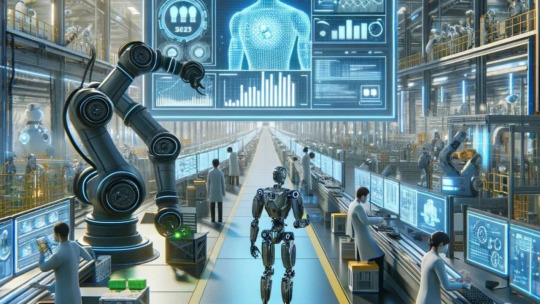
But with a flood of vendors offering a variety of tools, how do you decide which features matter most? In this article, we’ll break down the essential features to look for when selecting the right automation solution for your IT workspace.
1. Intelligent Workflow Automation
At the core of any AI automation solution lies its ability to automate repetitive tasks—but not all automation is created equal. Look for systems that can intelligently route tasks, make decisions based on data, and learn from patterns over time.
Key capabilities to consider:
Conditional logic (if/then scenarios)
Data-driven task assignment
Auto-resolution of common issues
Scheduled and event-triggered automation
With AI-backed decision-making, your team can spend less time on repetitive chores and more on strategic projects.
2. Natural Language Processing (NLP) Integration
A truly modern AI workspace automation solution must come with NLP capabilities, allowing users to interact with the system using everyday language. This is particularly useful in service desk operations, where employees describe their IT issues in non-technical terms.
Key use cases:
Conversational ticket creation
Intelligent search through historical issues
Chatbots for L1 support
Voice or text-based queries
This dramatically improves the user experience and reduces the burden on your support teams.
3. Self-Healing Capabilities
An advanced AI solution should go beyond detecting issues—it should resolve them autonomously when possible. This concept, known as self-healing IT, enables systems to repair themselves without human intervention.
Look for features such as:
Auto-remediation scripts triggered by alerts
Predictive failure detection (based on logs, metrics, behavior)
Rollback to previous stable states
Automated patch management
The faster your system can recover from anomalies, the less downtime your users will experience.
4. Unified Dashboard and Reporting
A fragmented view of your IT operations can hinder decision-making. Choose a solution that provides a unified dashboard, allowing you to monitor tasks, performance metrics, tickets, automation rules, and user interactions in real-time.
Key reporting capabilities to seek:
Real-time analytics
SLA tracking and compliance
Automation success/failure rate reports
User satisfaction and feedback metrics
Powerful visualization helps both IT and non-technical stakeholders grasp system health at a glance.
5. Seamless Integration with Existing Tools
No tool operates in isolation. Your automation solution should integrate easily with your existing IT infrastructure—including ticketing systems, CRMs, communication platforms, and cloud services.
Examples of integrations:
ServiceNow, Jira, or Zendesk for ticketing
Slack, Teams, or email for communication
Azure, AWS, or GCP for cloud services
Active Directory and other identity management tools
APIs and prebuilt connectors save you time and allow for a smoother transition.
6. Scalability and Flexibility
Your IT needs today may look very different in a year or two. A great automation platform should be scalable to accommodate growth and flexible to adapt to evolving workflows.
Scalability considerations:
Can it handle thousands of users or devices without performance degradation?
Does it support hybrid environments (cloud + on-premise)?
Is it modular so that you can add features as needed?
The ideal solution grows with you, rather than forcing you to switch tools every time your business scales.
7. Security and Compliance
Security is a top priority in any IT system—especially one that has access to sensitive data and can make changes autonomously. Ensure your automation solution adheres to industry security standards and compliance frameworks.
Features to look for:
Role-based access control (RBAC)
Data encryption (in transit and at rest)
Audit trails and logs
Compliance with GDPR, HIPAA, ISO 27001, etc.
Automating tasks shouldn’t come at the cost of exposing your organization to unnecessary risks.
8. AI-Powered Insights and Recommendations
Beyond automating tasks, your solution should be able to analyze historical data and offer actionable insights to improve IT operations. This is where the real value of AI comes into play.
Look for these capabilities:
Root cause analysis suggestions
Recommendations for optimizing workflows
Anomaly detection and alerts
User behavior analytics
Instead of just automating what’s already inefficient, the right system helps you continually refine and optimize your processes.
9. Low-Code or No-Code Interface
A user-friendly interface can significantly reduce the learning curve and broaden the usability of the system. With low-code or no-code builders, even non-technical users can create and manage automation workflows.
This empowers:
IT admins to build workflows without developer assistance
Business users to automate simple tasks (like report generation or data entry)
Faster deployment and iteration of automations
An intuitive interface is key to adoption and long-term success.
10. Support and Community
Lastly, even the best tools can fail if support is lacking. Check whether the vendor offers strong customer support, training resources, and a thriving user community.
Support aspects to evaluate:
24/7 technical support options
Documentation and how-to guides
Community forums or user groups
Onboarding and training programs
A knowledgeable vendor who listens and helps you adapt the solution to your needs is invaluable.
Final Thoughts
Choosing the right AI IT workspace automation solution requires careful evaluation of your current workflows, business goals, and user needs. Features like intelligent workflows, NLP, self-healing systems, and scalable architecture are no longer “nice to have”—they’re essentials in a fast-paced, digital-first environment.
By selecting a solution that not only automates but also adapts, predicts, and enhances your IT operations, you’re investing in a more resilient and future-proof organization.
Remember, the goal isn’t just automation—it’s transformation.
Ready to begin your search? Start with a clear list of your business requirements, prioritize the features outlined above, and ensure your chosen AI IT Workspace Automation Solution is built for today’s challenges—and tomorrow’s opportunities.
0 notes
Text
What Makes ChatGPT Integration Services Essential for Modern SaaS Platforms?
In the ever-evolving digital landscape, Software-as-a-Service (SaaS) platforms are under constant pressure to innovate, personalize user experiences, and optimize operations. As artificial intelligence (AI) continues to gain traction, ChatGPT integration services are emerging as a game-changer for SaaS providers looking to stay competitive. With the ability to provide intelligent conversational interfaces, automate workflows, and elevate customer support, ChatGPT is no longer a futuristic novelty—it’s a strategic necessity.
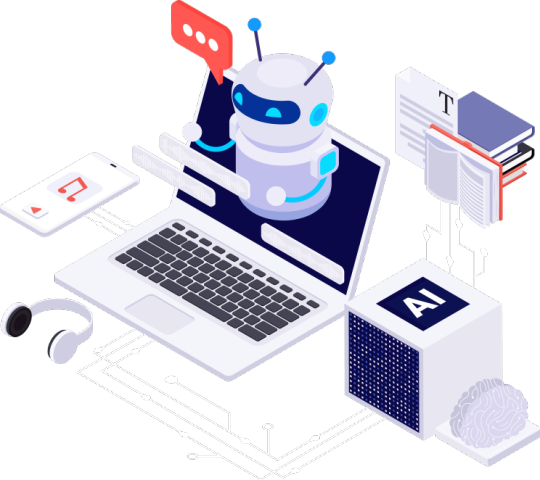
Understanding ChatGPT and Its Capabilities
ChatGPT, developed by OpenAI, is a large language model (LLM) capable of understanding and generating human-like text based on context and intent. It can carry on meaningful conversations, draft content, analyze data, summarize documents, and answer complex queries.
When integrated into SaaS platforms, ChatGPT acts as a virtual assistant that can:
Answer customer support queries
Automate repetitive tasks
Personalize user interactions
Analyze user data
Facilitate onboarding and training
Generate insights from unstructured content
These capabilities unlock a wide array of benefits for SaaS companies and their users.
1. Enhancing Customer Support and User Experience
One of the most compelling use cases for ChatGPT in SaaS is customer support automation. Traditional support systems often rely on static FAQs, limited decision-tree bots, or overburdened human agents. ChatGPT offers a dynamic, conversational alternative.
Key Benefits:
24/7 Support: ChatGPT can handle inquiries at any hour without delays.
Multilingual Capabilities: It can converse in multiple languages, catering to global user bases.
Context-Aware Responses: Unlike rule-based bots, ChatGPT remembers context within a session, making interactions more natural and helpful.
This leads to faster resolution times, reduced support costs, and higher user satisfaction.
2. Streamlining Internal Workflows and Automation
Modern SaaS platforms often juggle complex backend operations, from user management to data analysis. ChatGPT integration can automate routine internal tasks, boosting efficiency.
Examples:
Automated ticket classification in helpdesk software
Generating reports from CRM or project management tools
Data summarization for analytics dashboards
Creating content (e.g., email templates, product descriptions, release notes)
By reducing manual work, employees can focus on strategic initiatives rather than administrative tasks.
3. Personalization at Scale
Today’s users expect personalized experiences. ChatGPT helps SaaS companies tailor interactions based on user behavior, preferences, and history.
Use Cases:
Recommending next steps in onboarding
Tailoring marketing messages or product suggestions
Offering customized tutorials or help based on user activity
This level of personalization enhances user retention, lowers churn, and contributes to higher customer lifetime value (CLTV).
4. Empowering Developers and Product Teams
ChatGPT doesn’t just help end-users—it can also be a powerful tool for developers, product managers, and QA teams. Integrated into SaaS dev environments, it can assist with:
Code suggestions and debugging
Documentation generation
User story refinement
Bug report analysis
This accelerates product development cycles and improves cross-functional collaboration.
5. Facilitating Seamless Onboarding and Training
For complex SaaS platforms, onboarding new users can be a challenge. Traditional walkthroughs often fail to adapt to the user’s needs. ChatGPT provides interactive onboarding experiences that guide users through features step-by-step, answering questions in real-time.
It can also serve as an in-app tutor, providing explanations, offering best practices, and troubleshooting issues—all without leaving the platform.
6. Supporting Multimodal and Voice Interfaces
With the rise of multimodal AI, ChatGPT can go beyond text to analyze images, voice commands, or code snippets. For SaaS products offering design, analytics, or dev tools, this opens up new interaction modes:
Voice-to-text commands for accessibility
Image or file analysis in support or documentation tools
Hands-free operation in mobile apps
These integrations create more inclusive and future-ready user experiences.
7. Gaining Competitive Edge Through Innovation
Integrating ChatGPT isn't just about operational efficiency—it’s a differentiator in crowded SaaS markets. Companies that adopt conversational AI early often enjoy:
Higher user engagement
Brand differentiation
Faster scaling of services
Customers are more likely to adopt platforms that feel intelligent, intuitive, and responsive—traits that ChatGPT enables.
8. Lowering Operational Costs
By automating support, onboarding, content generation, and internal processes, ChatGPT helps SaaS businesses reduce overhead without compromising quality. For startups and scaling companies, this can mean freeing up resources to invest in core product features or customer acquisition.
Even enterprise-level SaaS providers benefit from streamlined processes and scalable support systems.
9. Improving Data Analysis and Decision-Making
SaaS platforms generate huge volumes of unstructured data—emails, tickets, logs, feedback, etc. ChatGPT can extract insights from this data in real-time:
Sentiment analysis from support tickets or reviews
Trend summaries from user activity logs
Automatic tagging or classification of content
These insights can help teams prioritize roadmap items, optimize user journeys, or identify gaps in the product.
10. Easy API Integration and Customization
OpenAI provides flexible APIs that make it relatively easy for SaaS platforms to integrate ChatGPT into their existing stacks. Whether using REST APIs, SDKs, or plugins, ChatGPT can be embedded into:
Web apps
Mobile apps
Slack, Teams, or other workplace tools
Custom dashboards
Moreover, its responses can be custom-trained or fine-tuned for specific industries, ensuring relevance and brand voice alignment.
Conclusion
As SaaS platforms continue to grow in complexity, the need for intuitive, responsive, and intelligent interfaces becomes paramount. ChatGPT is at the forefront of this shift—offering a blend of human-like interaction, automation, and insight generation that elevates every aspect of a SaaS product.
By integrating ChatGPT now, SaaS companies can future-proof their offerings, deliver exceptional user experiences, and unlock operational efficiencies that directly impact the bottom line.
Whether you're a startup looking for scale or an enterprise seeking innovation, ChatGPT integration services are no longer optional—they’re essential.
0 notes
Text
Why Should Businesses Invest in Adaptive AI Development Services?
In today’s data-driven, fast-paced world, staying competitive requires more than just automation—it requires intelligence that evolves. Adaptive Artificial Intelligence (AI) stands at the forefront of this transformation, offering businesses the ability to not only respond to changes in real-time but to learn, optimize, and thrive in unpredictable environments. As we step deeper into the age of digital transformation, investing in adaptive AI development services is quickly becoming a strategic imperative for forward-thinking organizations.

But what exactly is adaptive AI, and why is it such a game-changer? Let’s explore the concept, its benefits, applications, and why now is the perfect time for businesses to invest in adaptive AI development services.
What is Adaptive AI?
Adaptive AI is a form of artificial intelligence designed to continuously learn and adjust its behavior based on new data, experiences, or environmental changes. Unlike traditional AI models that operate based on static, pre-trained algorithms, adaptive AI systems retrain themselves in real-time or near-real-time to optimize outcomes.
At its core, adaptive AI blends machine learning, real-time data processing, and feedback mechanisms to improve performance over time. This adaptability enables businesses to make more accurate predictions, deliver better customer experiences, and make smarter operational decisions.
Why Traditional AI Isn’t Enough Anymore
Traditional AI models are powerful but rigid. Once trained, these models often struggle to cope with changing conditions or evolving customer behaviors. Any significant shift in the environment—like a market trend, customer preference, or supply chain disruption—can make them obsolete unless they’re manually updated or retrained.
This rigidity leads to:
Slower response times to emerging challenges
High maintenance costs for regular retraining
Loss of competitive edge due to outdated insights
Adaptive AI eliminates these pitfalls by constantly evolving, making it especially valuable in dynamic industries like retail, finance, healthcare, and logistics.
Benefits of Investing in Adaptive AI Development Services
1. Enhanced Decision-Making with Real-Time Learning
Adaptive AI can ingest real-time data and provide updated recommendations or decisions instantly. Whether it’s stock trading, inventory management, or personalized marketing, businesses can respond to new developments with agility and confidence.
2. Hyper-Personalization of Customer Experience
Customers expect tailored experiences. Adaptive AI leverages evolving customer data to refine personalization strategies in real-time—whether in e-commerce recommendations, chatbot responses, or financial services offerings.
Example: A streaming platform using adaptive AI can adjust content recommendations based on a user’s changing preferences, time of day, or even mood inferred from interactions.
3. Operational Efficiency and Cost Savings
By continuously optimizing processes like supply chain logistics or energy consumption, adaptive AI helps reduce waste, lower operational costs, and improve resource allocation.
Example: Adaptive AI in manufacturing can adjust machinery operations based on sensor feedback, reducing downtime and extending equipment life.
4. Improved Risk Management and Fraud Detection
Adaptive AI excels in detecting anomalies and evolving patterns of fraudulent behavior. Unlike static models, it keeps pace with sophisticated tactics and learns from each incident.
5. Scalability and Flexibility
Adaptive AI systems grow with your business. As new products, markets, or data sources are introduced, these systems adjust without the need for a complete overhaul.
Key Industries Benefiting from Adaptive AI
1. Finance
Adaptive AI in banking helps detect fraudulent transactions, improve credit scoring models, and deliver dynamic risk assessments. It can also optimize algorithmic trading strategies based on real-time market data.
2. Retail and E-commerce
Retailers use adaptive AI to refine inventory forecasts, personalize offers, and reduce churn by continuously learning customer preferences and behavior.
3. Healthcare
From personalized treatment plans to predictive diagnostics, adaptive AI helps medical professionals make better decisions by analyzing patient data in real-time.
4. Manufacturing
Adaptive AI improves production line efficiency, predicts equipment failures, and enhances quality control with minimal human intervention.
5. Transportation and Logistics
Adaptive route optimization and demand forecasting enable logistics companies to cut delivery times, lower fuel consumption, and improve customer satisfaction.
What to Expect from Adaptive AI Development Services
Investing in adaptive AI isn’t about purchasing off-the-shelf software. It involves strategic development, deployment, and continuous optimization tailored to your business goals. Here’s what professional adaptive AI services typically offer:
1. Needs Assessment and Strategy Planning
Understanding your current systems, goals, and challenges is the first step. Experts map out opportunities where adaptive AI can make the most impact.
2. Custom Model Development
Unlike generic models, adaptive AI services build tailored algorithms specific to your industry, use case, and data patterns.
3. Real-Time Data Integration
Seamless integration with existing data sources and IoT devices ensures the AI system is constantly learning from fresh inputs.
4. Deployment and Monitoring
Once deployed, the adaptive AI system is monitored for performance, accuracy, and compliance, with regular updates and fine-tuning.
5. Training and Support
Your team may need training to interact with and benefit from adaptive systems. Leading service providers offer ongoing support and education.
Challenges and Considerations
While the benefits are substantial, there are some considerations before embarking on the adaptive AI journey:
Data Privacy & Ethics: Adaptive AI uses real-time data, which may include sensitive information. Ensuring ethical data use and compliance with regulations like GDPR is critical.
Infrastructure Requirements: Adaptive AI requires robust cloud or edge computing infrastructure to handle continuous learning and real-time inference.
Change Management: Employees may need training to adapt to AI-driven workflows. Resistance to change can hinder adoption.
Vendor Selection: Partnering with an experienced, trustworthy AI development firm is essential for success. Look for proven expertise, industry alignment, and long-term support capabilities.
Why Now is the Right Time to Invest
The convergence of technologies—cloud computing, 5G, IoT, and big data—has made adaptive AI more accessible and affordable than ever before. At the same time, markets are more volatile, customer behaviors shift rapidly, and the cost of poor decision-making has never been higher.
According to Gartner, by 2026, organizations that adopt adaptive AI will outperform their peers by at least 25% in operational efficiency and customer experience metrics.
The sooner businesses invest in adaptive AI development services, the faster they can build resilience, innovation, and sustained growth.
Conclusion
In an era where change is the only constant, static AI is no longer sufficient. Businesses need intelligence that doesn’t just respond but evolves. Adaptive AI provides the agility, personalization, and continuous optimization necessary for today’s and tomorrow’s challenges.
Investing in adaptive AI development services is more than a tech upgrade—it’s a strategic move toward future-proofing your organization. Whether you're aiming to personalize customer interactions, streamline operations, or gain deeper insights, adaptive AI holds the key to unlocking your business’s next level of performance.
0 notes
Text
10 Ways Generative AI for Travel Enhances the Modern Explorer’s Experience
In a world where technology continues to reshape how we live, travel is no exception. From planning itineraries to discovering hidden gems, Generative AI is revolutionizing the way modern explorers navigate the globe. With its ability to process vast datasets, create personalized content, and adapt in real time, generative AI is becoming the modern traveler’s ultimate sidekick. Here are 10 transformative ways it’s enhancing the travel experience today.
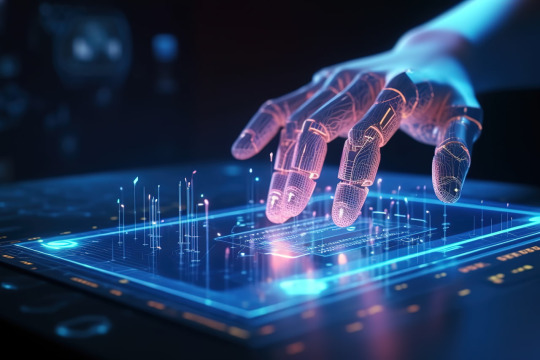
1. Hyper-Personalized Itinerary Planning
Gone are the days of generic travel guides and one-size-fits-all recommendations. Generative AI tools can now craft customized travel itineraries based on a traveler’s interests, budget, time constraints, and travel history. Whether you’re a foodie seeking street eats in Bangkok or a digital nomad chasing quiet co-working cafés in Lisbon, AI can curate daily plans tailored specifically to your preferences.
AI platforms like ChatGPT and other travel-focused models analyze user inputs and suggest optimized routes, schedules, and activities—saving time and reducing the decision fatigue that often comes with trip planning.
2. Real-Time Language Translation
Language barriers have always posed a challenge to global travelers. With generative AI-powered translation tools, communication has become smoother than ever. Apps now offer real-time voice translation, text conversion through cameras, and even local slang interpretation, enabling travelers to interact confidently in foreign countries.
This capability not only enhances cultural immersion but also helps in critical situations like asking for directions, understanding transportation signs, or navigating health emergencies.
3. AI-Powered Travel Chatbots
From airline customer service to hotel concierge desks, AI-driven chatbots are streamlining traveler support. These bots can handle bookings, answer FAQs, suggest nearby attractions, and even assist with rebooking in case of cancellations or delays.
Available 24/7 and often integrated into mobile apps or websites, these virtual assistants reduce stress and wait times, offering instant solutions for everything from itinerary changes to restaurant reservations.
4. Visual Discovery and Destination Inspiration
Stuck wondering where to go next? Generative AI uses image recognition and social media trend analysis to suggest travel destinations that match your tastes. Upload a photo or describe your dream landscape, and AI tools like Sora or DALL·E can generate visual concepts of destinations that fit your criteria—be it tropical, mountainous, urban, or historic.
This visual storytelling approach engages the imagination and helps travelers visualize possibilities they may not have considered.
5. Enhanced Travel Photography
AI is not just about planning; it's also enriching how we capture memories. Generative AI tools can now enhance photos by adjusting lighting, removing crowds, and even generating panoramic views. Some apps can create travel reels or cinematic summaries from your trip photos and videos, telling your story in engaging, shareable formats.
For influencers and casual travelers alike, these tools elevate content quality without the need for professional editing skills.
6. Localized Cultural Recommendations
Generative AI understands local customs, events, and lesser-known attractions often overlooked by mainstream travel platforms. By accessing up-to-date local data, it can recommend community markets, cultural festivals, and local performances that align with your travel dates.
This means a more authentic and immersive travel experience that goes beyond tourist traps and lets you explore destinations like a local.
7. Smarter Budget Planning
Managing expenses on a trip can be tricky, especially when exchange rates fluctuate or hidden costs appear. Generative AI tools can project your total trip expenses, suggest cost-effective alternatives, and provide daily spending breakdowns.
By integrating with budgeting apps, AI can track real-time spending and alert travelers if they’re exceeding their budgets—helping avoid post-trip financial regrets.
8. Predictive Weather and Climate Insights
While weather forecasts are nothing new, generative AI enhances their utility by combining real-time data with historical climate patterns to predict optimal travel periods. It can also advise on packing essentials based on forecasted conditions and your activity plans.
This makes it easier to avoid unpleasant surprises—like arriving in Bali during monsoon season or packing the wrong clothes for Iceland in March.
9. Adaptive Navigation and Transportation Tips
Generative AI doesn’t stop working once you land. It adapts to real-time changes in local transportation systems, traffic patterns, or road closures to keep your travel plans on track. Whether it's rerouting your day due to a transit strike or suggesting alternative modes of transport like scooters or boats, AI ensures smooth transitions on the ground.
Some tools even integrate with ride-sharing and public transport apps to provide multi-modal journey planning across cities.
10. Sustainable Travel Suggestions
With more travelers becoming eco-conscious, generative AI can assist in making greener choices. From recommending eco-certified accommodations to optimizing flight routes for lower emissions or identifying local carbon offset programs, AI empowers responsible travel.
It can also calculate your trip’s carbon footprint and suggest ways to reduce or balance it, contributing to more sustainable tourism.
Conclusion
As the lines between digital and physical experiences continue to blur, Generative AI for Travel emerges as an indispensable ally for the modern explorer. It transforms every phase of the journey—from inspiration and planning to on-the-ground adaptation and post-trip storytelling—making travel more personalized, efficient, immersive, and sustainable. Whether you're chasing adventure, culture, or comfort, generative AI ensures you’re never traveling alone.
0 notes
Text
How Generative AI Development Is Transforming Industries
Generative AI has emerged as one of the most disruptive technologies of the 21st century, reshaping industries by automating creativity, optimizing operations, and unlocking new avenues of innovation. From generating text and images to coding software and creating personalized marketing content, generative AI is no longer a niche tool—it’s a foundational shift that’s transforming how businesses operate.
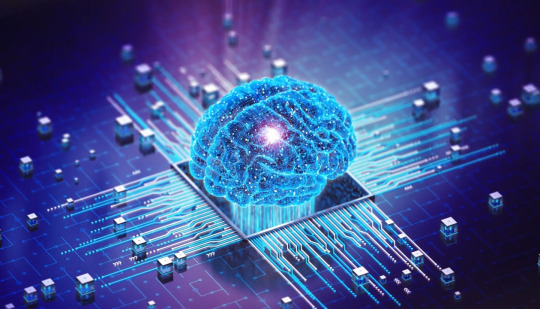
In this blog, we’ll explore how generative AI is revolutionizing key sectors, the technologies driving its growth, and what the future might hold for enterprises that adopt it.
What Is Generative AI?
Generative AI refers to machine learning models that can create new content—text, images, audio, video, code, or even product designs—based on training data. Unlike traditional AI that classifies or predicts data, generative AI can synthesize entirely new outputs that resemble human creativity.
Leading examples include:
ChatGPT (OpenAI) for generating human-like text
DALL·E and Midjourney for image generation
Sora for video creation
GitHub Copilot for coding assistance
The rapid development of these tools is powered by transformer-based architectures, vast datasets, and massive computational power.
1. Healthcare and Life Sciences
Generative AI is reshaping healthcare by accelerating drug discovery, improving diagnostics, and personalizing patient care.
Key Impacts:
Drug Discovery: AI models can simulate molecular structures and generate viable drug candidates in a fraction of the time it takes traditional methods. Companies like Insilico Medicine use generative models to create novel compounds.
Medical Imaging: AI-generated synthetic images help train diagnostic systems more effectively, improving detection of diseases like cancer or neurological disorders.
Clinical Documentation: Tools like Nuance’s DAX or GPT-based scribes assist doctors by auto-generating patient visit summaries, freeing time for care.
Benefits:
Reduced R&D costs
Faster time to market for treatments
More accurate and accessible care
2. Media and Entertainment
The media landscape is being redefined by generative AI’s ability to produce content at scale.
Key Impacts:
Scriptwriting and Storyboarding: Tools like Sudowrite assist in content creation, generating narratives and dialogue drafts.
Visual Effects and Animation: Generative AI helps studios create concept art, characters, and even animations with minimal manual input.
Music and Voice: AI-generated voices (e.g., ElevenLabs) and music composition tools (e.g., Amper Music) reduce production costs and open creative possibilities.
Benefits:
Faster content production
Cost-effective creative pipelines
New monetization models (e.g., AI-generated influencers or virtual artists)
3. Finance and Banking
In the highly regulated and competitive financial sector, generative AI is enabling smarter decision-making and streamlined operations.
Key Impacts:
Report Generation: Banks use AI to auto-generate investment reports, summaries, and internal analyses.
Risk Assessment: Generative models simulate various financial scenarios for better risk modeling and fraud detection.
Customer Service: Chatbots and AI advisors provide 24/7 client interaction with personalized financial guidance.
Benefits:
Increased efficiency in reporting
Enhanced fraud detection
Improved customer engagement and support
4. Manufacturing and Engineering
Generative AI plays a vital role in product design, simulation, and predictive maintenance in manufacturing industries.
Key Impacts:
Generative Design: AI can create thousands of potential designs for a product based on performance and material constraints (e.g., Autodesk’s generative design tools).
Digital Twins: AI generates digital replicas of physical assets to simulate operations and predict failures.
Supply Chain Optimization: Large Language Models (LLMs) analyze vast logistics data to recommend improvements and forecast disruptions.
Benefits:
Faster and smarter product development
Reduced material waste
Enhanced operational reliability
5. Retail and E-Commerce
Retailers are leveraging generative AI to hyper-personalize experiences, create content, and manage inventory intelligently.
Key Impacts:
Product Descriptions: AI generates thousands of SEO-friendly product descriptions, reducing manual work and improving conversion.
Visual Merchandising: AI tools generate mockups, store layouts, and promotional imagery tailored to specific audiences.
Chatbots and Personal Shopping: AI agents act as personalized shopping assistants, recommending products and handling queries.
Benefits:
Enhanced customer experience
Faster go-to-market for campaigns
Lower content production costs
6. Education and Training
Generative AI is changing how we teach, learn, and develop skills—making education more engaging and personalized.
Key Impacts:
Content Creation: Tools like ChatGPT can generate quizzes, lesson plans, and study guides customized to individual learning styles.
Tutoring: AI-powered tutors provide one-on-one help, adapting explanations based on student progress.
Corporate Training: Simulated environments and roleplays (powered by generative AI) are used for soft skills and scenario-based training.
Benefits:
Scalable personalized learning
Faster course creation
More engaging educational experiences
7. Legal and Compliance
The legal sector, traditionally reliant on manual research and documentation, is being transformed by generative AI’s automation capabilities.
Key Impacts:
Contract Drafting: AI tools like Harvey.ai help draft, summarize, and review legal documents.
Legal Research: Natural language queries can retrieve relevant case law and regulations faster than traditional databases.
Compliance Automation: Companies use AI to generate compliance reports and conduct risk assessments tailored to local regulations.
Benefits:
Time and cost savings
Improved accuracy in legal work
Increased access to legal services
Challenges and Ethical Considerations
Despite its potential, generative AI comes with significant challenges:
Bias and Misinformation: AI models can inherit or amplify biases present in their training data.
Copyright Concerns: Using AI-generated or trained-on content raises legal questions about ownership and attribution.
Job Displacement: Certain roles, especially in content creation and customer service, may face disruption.
Data Privacy: Generative AI systems must handle sensitive data responsibly, especially in sectors like healthcare and finance.
To mitigate these, organizations must adopt clear governance frameworks, transparency in model usage, and strong human oversight.
The Road Ahead: What’s Next?
As generative AI matures, several trends are shaping its future:
Multimodal Models: Tools like GPT-4o and Google Gemini can process text, images, audio, and video—opening up rich, cross-modal applications.
Real-time Co-Creation: AI will become a true collaborator in meetings, design sessions, and creative workspaces.
Industry-Specific Fine-Tuning: Companies are developing domain-specific models tailored to their data and needs.
Democratization: Generative AI tools are becoming more accessible, allowing startups and small businesses to compete with larger players.
Organizations that invest early and strategically in generative AI will be better positioned to lead in a rapidly evolving digital economy.
Conclusion
Generative AI development is not just a technological trend—it’s a paradigm shift in how value is created across industries. From automating labor-intensive tasks to enabling entirely new business models, it offers organizations a powerful tool for innovation and efficiency.
While challenges remain, the path forward involves thoughtful adoption, robust ethics, and a willingness to reimagine traditional processes. The industries that embrace generative AI today are laying the foundation for the intelligent, creative, and adaptive enterprises of tomorrow.
0 notes
Text
How Adaptive AI Development Is Revolutionizing Business Intelligence?
In a world where data is the new oil, businesses are finding it increasingly critical to not just collect data—but to act on it quickly and intelligently. This is where adaptive AI steps into the spotlight. Traditional Business Intelligence (BI) tools helped organizations analyze past data to make decisions. But adaptive AI is changing the rules. It doesn't just report what was—it learns, evolves, and helps predict what will be.

What Is Adaptive AI?
Adaptive AI refers to artificial intelligence systems that can learn and evolve in real-time or near-real-time by adapting their behaviors based on new data, feedback, or environmental changes. Unlike traditional AI systems, which require manual retraining and redeployment to improve, adaptive AI modifies its behavior autonomously.
This adaptability means businesses can move from static decision-making to dynamic, context-aware strategies that improve over time.
Key Characteristics:
Continuous learning from new data streams.
Context awareness to adapt behavior based on environment.
Real-time decision-making with minimal human intervention.
Feedback integration to enhance accuracy and relevance.
The Shift from Traditional BI to Adaptive Intelligence
Traditional BI systems are mostly descriptive and diagnostic: they show what happened and why. They rely heavily on static dashboards, pre-defined KPIs, and historical data.
In contrast, adaptive AI-powered BI systems are:
Predictive: They anticipate trends and outcomes.
Prescriptive: They suggest actions and improvements.
Automated: They reduce the need for manual analysis.
This marks a fundamental shift from reactive to proactive business intelligence.
How Adaptive AI Is Transforming Business Intelligence
1. Hyper-Personalized Insights
Adaptive AI tailors insights not just at a departmental or team level, but down to the individual decision-maker. For example:
A sales manager may receive customized suggestions for pricing strategies based on evolving customer behaviors.
A marketing analyst can get real-time predictions on which campaign is likely to perform best for a specific customer segment.
This granularity in insight leads to better, faster decisions and greater strategic alignment across the organization.
2. Real-Time Data Analysis and Response
In today’s fast-paced business environment, delays in data interpretation can mean lost opportunities. Adaptive AI continuously ingests data from sources such as IoT devices, social media, and transactional systems to:
Detect anomalies immediately (e.g., fraud detection).
Update forecasts dynamically (e.g., inventory predictions).
Trigger automated actions (e.g., adjust supply chain operations).
Businesses become responsive, agile, and proactive instead of slow and reactive.
3. Improved Forecasting Accuracy
Forecasting is the backbone of decision-making in finance, operations, and sales. Traditional models rely on historical data and rigid assumptions. Adaptive AI improves accuracy by:
Continuously updating models with the latest data.
Learning from past forecasting errors.
Integrating external variables (weather, economic trends, etc.).
For instance, a retail chain can use adaptive AI to dynamically adjust sales forecasts based on local events, weather changes, or competitor actions.
4. Self-Healing and Auto-Optimization
Adaptive AI systems don't just react—they improve over time. This means:
Self-correcting algorithms that learn from misclassifications or incorrect predictions.
Auto-optimization of performance parameters without manual tuning.
This results in lower operational costs, higher uptime, and more accurate insights over time.
5. Cross-Functional Intelligence
Adaptive AI breaks down silos by integrating and analyzing data across functions like sales, marketing, HR, and supply chain. For example:
It can correlate employee engagement metrics with customer satisfaction.
It can link marketing spend to real-time sales conversions.
This leads to a more holistic view of business performance, promoting cross-functional collaboration.
Real-World Applications of Adaptive AI in BI
🏬 Retail
Adaptive AI helps in demand forecasting, dynamic pricing, customer behavior prediction, and inventory management. Personalized shopping experiences, real-time stock updates, and fraud prevention are now more efficient than ever.
🚚 Supply Chain Management
Supply chains are complex and vulnerable to disruption. Adaptive AI enables:
Predictive maintenance for logistics.
Route optimization based on real-time traffic and weather data.
Demand-driven inventory planning.
🏥 Healthcare
From optimizing patient scheduling to predicting disease outbreaks, adaptive AI supports:
Real-time diagnostics.
Personalized treatment plans.
Dynamic resource allocation in hospitals.
💰 Finance
Financial institutions use adaptive AI for:
Fraud detection.
Credit scoring based on non-traditional data.
Investment trend predictions.
These capabilities reduce risk while boosting accuracy and customer trust.
🏢 Human Resources
Adaptive AI in HR allows for:
Real-time sentiment analysis.
Predicting employee attrition.
Matching candidates to roles using behavioral and performance data.
Future Trends: What’s Next for Adaptive AI and BI?
Autonomous Decision-Making: Systems will not only suggest actions but implement them with minimal supervision.
Edge AI for Real-Time Processing: Processing data closer to the source (e.g., IoT sensors) will reduce latency.
AI Governance: As adaptive AI becomes central to business, ethical and regulatory frameworks will mature.
Natural Language Interfaces: Conversational BI—where users ask questions in plain English and receive dynamic, adaptive insights—will become standard.
Synthetic Data for Better Models: Using generated data to train adaptive AI where real data is scarce or sensitive.
Conclusion
Adaptive AI Development is no longer just a buzzword—it's a transformational force in the world of business intelligence. By enabling systems to evolve, respond in real-time, and offer hyper-personalized insights, adaptive AI turns BI from a passive reporting tool into a strategic decision-making engine.
Organizations that embrace this shift will not only gain a competitive edge but will also future-proof themselves in an era where change is the only constant.
0 notes
Text
The Future of AI in Manufacturing: Trends to Watch in 2025
Artificial Intelligence (AI) continues to redefine the industrial landscape, and 2025 is set to be a pivotal year for manufacturing. As industries recover from global disruptions, such as supply chain instability and labor shortages, manufacturers are turning to AI not just as a tool, but as a strategic asset. From smart factories to predictive maintenance, AI is driving innovation, efficiency, and sustainability.
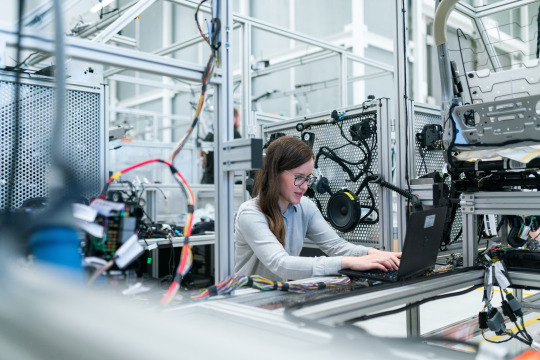
In this blog, we explore the key AI trends in manufacturing that are expected to gain momentum in 2025—and what they mean for the future of the industry.
1. Hyper-Automated Smart Factories
Smart factories are not new, but in 2025, expect a leap toward hyper-automation—an advanced form of automation powered by AI, robotics, IoT, and machine learning. These factories will go beyond routine automation to dynamically manage operations in real-time.
Key Features:
Autonomous production lines that adjust parameters without human intervention.
AI-driven quality control using computer vision to spot defects with precision.
Real-time inventory and logistics management, minimizing waste and downtime.
Impact:
Improved production speed and product quality.
Significant reduction in operational costs.
Enhanced agility to respond to market changes.
2. AI-Enhanced Predictive Maintenance
Maintenance is shifting from reactive to predictive, and by 2025, AI-powered solutions will become the norm in manufacturing plants. These systems will not only predict failures but also recommend optimal maintenance schedules based on usage patterns, environmental conditions, and real-time data.
Technologies Involved:
Machine learning algorithms trained on sensor data.
Digital twins to simulate and test maintenance strategies.
Edge AI for low-latency, on-site decision-making.
Benefits:
Reduced downtime and maintenance costs.
Longer equipment lifespan.
Improved safety and compliance.
3. Generative AI for Product Design & Innovation
Generative AI, popularized by tools like ChatGPT and Midjourney, is entering the engineering and design phase of manufacturing. In 2025, manufacturers will increasingly use AI to co-create product designs, simulate use-cases, and optimize materials.
What to Expect:
Faster prototyping with AI-generated CAD models.
Design recommendations based on cost, materials, and sustainability.
Integration with 3D printing technologies for rapid testing.
Real-World Application:
Companies like BMW and Siemens are already experimenting with generative design to accelerate R&D and reduce time-to-market.
4. AI for Sustainable Manufacturing
Sustainability is no longer optional. AI will be instrumental in helping manufacturers meet their ESG (Environmental, Social, and Governance) goals in 2025 by optimizing resource usage, minimizing waste, and reducing emissions.
AI in Action:
Monitoring carbon footprint in real time.
Optimizing energy usage during production.
Circular economy strategies—AI predicting reuse and recycling opportunities.
Long-Term Gains:
Regulatory compliance.
Cost savings through reduced waste and energy.
Positive brand reputation and customer loyalty.
5. Human-AI Collaboration and Augmented Workforce
Rather than replacing humans, AI in 2025 will be more focused on augmenting the human workforce. With the rise of cobots (collaborative robots) and AI-assisted tools, workers will be empowered to perform complex tasks with greater precision and less physical strain.
Trends to Watch:
AI-powered wearables for real-time safety alerts.
Natural language interfaces for managing machinery.
Augmented reality (AR) tools guided by AI for assembly and maintenance.
Result:
Increased productivity and worker satisfaction.
Safer work environments.
More inclusive manufacturing jobs, even for non-technical workers.
6. AI-Driven Supply Chain Resilience
The post-pandemic world has taught manufacturers the importance of resilient supply chains. In 2025, AI will play a critical role in forecasting demand, identifying risks, and ensuring a flexible, responsive supply chain.
Capabilities:
AI-enabled demand sensing.
Automated supplier risk assessment.
Real-time logistics optimization.
Why It Matters:
Faster response to disruptions.
Lower inventory holding costs.
Better customer service levels.
7. Cybersecurity and AI Governance
As AI systems become deeply embedded in manufacturing, ensuring their security and ethical governance is crucial. 2025 will see a growing focus on AI governance frameworks and cybersecurity strategies tailored for industrial AI.
Measures Being Adopted:
AI model audits and explainability protocols.
AI behavior monitoring to prevent system drift or bias.
Secure data pipelines with encryption and anomaly detection.
Conclusion
The future of AI in manufacturing is not just about robots on factory floors—it’s about intelligent systems that rethink how products are designed, produced, and delivered. In 2025, we’ll witness a decisive shift toward more sustainable, resilient, and human-centric manufacturing powered by AI.
Companies that embrace these trends early will not only gain a competitive edge but also position themselves as leaders in the next industrial revolution—Industry 5.0, where technology and humanity work in harmony.
0 notes
Text
Why AIOps Platform Development Is Critical for Modern IT Operations?
In today's rapidly evolving digital world, modern IT operations are more complex than ever. With the proliferation of cloud-native applications, distributed systems, and hybrid infrastructure models, the traditional ways of managing IT systems are proving insufficient. Enter AIOps — Artificial Intelligence for IT Operations — a transformative approach that leverages machine learning, big data, and analytics to automate and enhance IT operations.
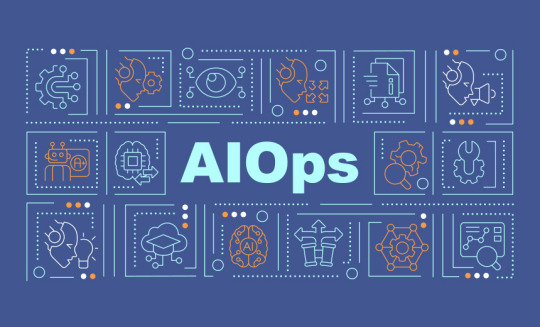
In this blog, we'll explore why AIOps platform development is not just beneficial but critical for modern IT operations, how it transforms incident management, and what organizations should consider when building or adopting such platforms.
The Evolution of IT Operations
Traditional IT operations relied heavily on manual intervention, rule-based monitoring, and reactive problem-solving. As systems grew in complexity and scale, IT teams found themselves overwhelmed by alerts, slow in diagnosing root causes, and inefficient in resolving incidents.
Today’s IT environments include:
Hybrid cloud infrastructure
Microservices and containerized applications
Real-time data pipelines
Continuous integration and deployment (CI/CD)
This complexity has led to:
Alert fatigue due to an overwhelming volume of monitoring signals
Delayed incident resolution from lack of visibility and contextual insights
Increased downtime and degraded customer experience
This is where AIOps platforms come into play.
What Is AIOps?
AIOps (Artificial Intelligence for IT Operations) is a methodology that applies artificial intelligence (AI) and machine learning (ML) to enhance and automate IT operational processes.
An AIOps platform typically offers:
Real-time monitoring and analytics
Anomaly detection
Root cause analysis
Predictive insights
Automated remediation and orchestration
By ingesting vast amounts of structured and unstructured data from multiple sources (logs, metrics, events, traces, etc.), AIOps platforms can provide holistic visibility, reduce noise, and empower IT teams to focus on strategic initiatives rather than reactive firefighting.
Why AIOps Platform Development Is Critical
1. Managing Scale and Complexity
Modern IT infrastructures are dynamic, with components spinning up and down in real time. Traditional monitoring tools can't cope with this level of volatility. AIOps platforms are designed to ingest and process large-scale data in real time, adapting to changing environments with minimal manual input.
2. Reducing Alert Fatigue
AIOps uses intelligent noise reduction techniques such as event correlation and clustering to cut through the noise. Instead of bombarding IT teams with thousands of alerts, an AIOps system can prioritize and group related incidents, reducing false positives and highlighting what's truly important.
3. Accelerating Root Cause Analysis
With ML algorithms, AIOps platforms can automatically trace issues to their root cause, analyzing patterns and anomalies across multiple data sources. This reduces Mean Time to Detect (MTTD) and Mean Time to Resolve (MTTR), which are key performance indicators for IT operations.
4. Predicting and Preventing Incidents
One of the key strengths of AIOps is its predictive capability. By identifying patterns that precede failures, AIOps can proactively warn teams before issues impact end-users. Predictive analytics can also forecast capacity issues and performance degradation, enabling proactive optimization.
5. Driving Automation and Remediation
AIOps platforms don’t just detect problems — they can also resolve them autonomously. Integrating with orchestration tools like Ansible, Puppet, or Kubernetes, an AIOps solution can trigger self-healing workflows or automated scripts, reducing human intervention and improving response times.
6. Supporting DevOps and SRE Practices
As organizations adopt DevOps and Site Reliability Engineering (SRE), AIOps provides the real-time insights and automation required to manage CI/CD pipelines, ensure system reliability, and enable faster deployments without compromising stability.
7. Enhancing Observability
Observability — the ability to understand what's happening inside a system based on outputs like logs, metrics, and traces — is foundational to modern IT. AIOps platforms extend observability by correlating disparate data, applying context, and providing intelligent visualizations that guide better decision-making.
Key Capabilities of a Robust AIOps Platform
When developing or evaluating an AIOps platform, organizations should prioritize the following features:
Data Integration: Ability to ingest data from monitoring tools, cloud platforms, log aggregators, and custom sources.
Real-time Analytics: Stream processing and in-memory analytics to provide immediate insights.
Machine Learning: Supervised and unsupervised learning to detect anomalies, predict issues, and learn from operational history.
Event Correlation: Grouping and contextualizing events from across the stack.
Visualization Dashboards: Unified views with drill-down capabilities for root cause exploration.
Workflow Automation: Integration with ITSM tools and automation platforms for closed-loop remediation.
Scalability: Cloud-native architecture that can scale horizontally as the environment grows.
AIOps in Action: Real-World Use Cases
Let’s look at how companies across industries are leveraging AIOps to improve their operations:
E-commerce: A major retailer uses AIOps to monitor application health across multiple regions. The platform predicts traffic spikes, balances load, and automatically scales resources — all in real time.
Financial Services: A global bank uses AIOps to reduce fraud detection time by correlating transactional logs with infrastructure anomalies.
Healthcare: A hospital network deploys AIOps to ensure uptime for mission-critical systems like electronic medical records (EMRs), detecting anomalies before patient care is affected.
Future of AIOps: What Lies Ahead?
As AIOps matures, we can expect deeper integration with adjacent technologies:
Generative AI for Incident Resolution: Intelligent agents that recommend fixes, draft playbooks, or even explain anomalies in plain language.
Edge AI for Distributed Systems: Bringing AI-driven observability to edge devices and IoT environments.
Conversational AIOps: Integrating with collaboration tools like Slack, Microsoft Teams, or voice assistants to simplify access to insights.
Continuous Learning Systems: AIOps platforms that evolve autonomously, refining their models as they process more data.
The synergy between AI, automation, and human expertise will define the next generation of resilient, scalable, and intelligent IT operations.
Conclusion
The shift toward AIOps is not just a trend — it's a necessity for businesses aiming to remain competitive and resilient in an increasingly digital-first world. As IT infrastructures become more dynamic, distributed, and data-intensive, the ability to respond in real-time, detect issues before they escalate, and automate responses is mission-critical.
Developing an AIOps platform isn’t about replacing humans with machines — it’s about amplifying human capabilities with intelligent, data-driven automation. Organizations that invest in AIOps today will be better equipped to handle the challenges of tomorrow’s IT landscape, ensuring performance, reliability, and innovation at scale.
0 notes
Text
Real-World Applications of Generative AI in IT Workspace
The rise of Generative AI has signaled a paradigm shift across industries, and the Information Technology (IT) workspace is at the forefront of this transformation. Generative AI, powered by models like GPT, DALL·E, and Codex, is not just a technological trend but a foundational tool that is reshaping how software is developed, infrastructure is managed, and services are delivered.
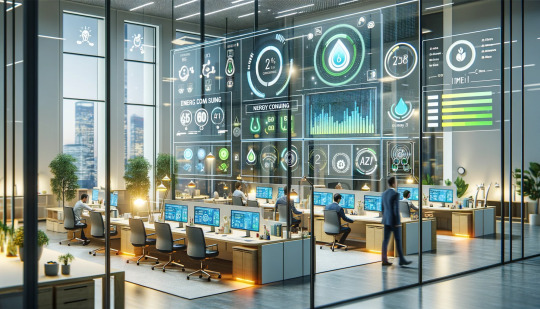
From automating code to enhancing cybersecurity, the real-world applications of Generative AI in the IT environment are growing rapidly. In this blog, we’ll explore these practical uses and how they are improving productivity, reducing costs, and enabling innovation.
1. Automated Code Generation and Optimization
One of the most tangible impacts of Generative AI in IT is its ability to assist in software development.
Code Generation
Tools like GitHub Copilot (powered by OpenAI Codex) are changing the development lifecycle. These AI-powered assistants can:
Generate boilerplate code
Auto-complete functions
Suggest logic flows
Translate code between languages
This not only accelerates development but also reduces the cognitive load on programmers. Junior developers, in particular, benefit from real-time code suggestions and learning opportunities embedded in their development environment.
Code Refactoring
Generative AI also helps in identifying inefficient code and rewriting it for better performance. Instead of manually optimizing legacy code, engineers can now rely on AI tools to suggest faster, more efficient alternatives.
2. Infrastructure Management with AI-Driven DevOps
The principles of DevOps rely on continuous integration, delivery, and deployment. Generative AI enhances these processes by automating script writing, configuration file generation, and pipeline optimization.
Examples Include:
Terraform & Kubernetes Scripts: AI can generate and validate infrastructure-as-code templates.
Incident Simulation & Recovery Plans: Generative models can simulate downtime scenarios and draft recovery procedures.
Log Analysis: AI tools can analyze massive logs, detect anomalies, and generate reports instantly.
This reduces human error and speeds up the deployment process, making DevOps teams more agile.
3. Intelligent Chatbots for IT Support
Generative AI has revolutionized the traditional IT helpdesk.
Smart Virtual Assistants
Using natural language processing (NLP), AI chatbots can handle L1 and L2 support tickets, answer FAQs, reset passwords, and even troubleshoot common issues — all without human intervention.
Benefits:
24/7 Availability
Multilingual Support
Context-aware Conversations
This results in faster resolution times, better user experience, and lower operational costs for IT support centers.
4. Enhanced Cybersecurity Operations
Cybersecurity threats are evolving rapidly, and the response needs to be even faster. Generative AI is contributing in several ways:
Threat Detection and Response
AI models can monitor network traffic and identify unusual patterns. When a threat is detected, the AI can:
Generate detailed incident reports
Suggest remediation actions
Simulate possible attack scenarios
Phishing Email Detection
Generative AI tools can analyze vast amounts of email data to detect and block phishing attempts, even generating educational material or alerts for end-users.
Automated Playbook Creation
Instead of manually writing response plans, AI can draft incident response playbooks based on historical data and best practices, ready for customization by human analysts.
5. Documentation and Knowledge Base Automation
Maintaining up-to-date documentation is a perennial challenge in IT. Generative AI makes it significantly easier.
Use Cases:
Auto-generating API Docs: AI can read source code and create detailed, human-readable API documentation.
Knowledge Base Content: Automatically draft user manuals, FAQs, and troubleshooting guides.
Change Logs and Release Notes: As software evolves, AI can summarize changes and format release notes for internal or customer-facing use.
This streamlines communication across teams and improves transparency in agile workflows.
6. Software Testing and Quality Assurance
Testing is an essential part of the software lifecycle. AI is making testing smarter and faster.
AI-Powered Test Case Generation
Generative AI can analyze requirements or codebases and create comprehensive test cases, including edge cases developers might overlook.
Automated Bug Reports
By reviewing application behavior or user feedback, AI can generate bug reports, propose solutions, and assign severity levels based on predicted impact.
UI Testing with Vision Models
Combining NLP and computer vision, AI tools can now "see" interfaces and test UI/UX consistency across platforms — something that previously required manual input.
7. Data Pipeline and ETL Process Automation
Data engineering tasks, such as Extract-Transform-Load (ETL), are critical but often repetitive.
How Generative AI Helps:
Generating SQL Queries: AI can translate natural language into complex SQL queries.
Schema Mapping: When integrating data from multiple sources, AI can suggest schema alignments and transformations.
Data Cleaning Scripts: AI models can write Python scripts to handle missing values, normalize data, or validate data quality.
This allows data teams to focus on strategic tasks rather than routine scripting.
8. AI-Powered Project Management
Project managers in IT are leveraging Generative AI for planning, monitoring, and reporting.
Examples:
Meeting Summaries: Automatically generate summaries from recorded meetings using voice-to-text models.
Task Breakdown: Input a project goal, and AI can suggest a complete task breakdown with timelines.
Progress Reports: Based on inputs from tools like Jira or Trello, AI can create stakeholder-ready progress updates.
This improves communication and ensures that project documentation is always up to date.
9. Custom Tool and Plugin Development
Many organizations require internal tools to solve specific problems. Generative AI accelerates custom development by:
Suggesting tool architectures
Generating UIs from textual descriptions
Creating backend logic with minimal input
This is particularly useful for prototyping and internal hackathons, where time is limited and innovation is encouraged.
10. Natural Language Interfaces for IT Systems
Generative AI enables a future where interacting with IT systems becomes more intuitive.
Voice and Chat Interfaces
Users can now interact with databases, servers, or file systems using natural language:
“Show me the top 10 servers by CPU usage in the last 24 hours.”
AI parses the request and runs the necessary scripts or queries in the background — no technical expertise required.
This democratizes access to IT resources and empowers non-technical users.
Challenges and Considerations
Despite its transformative potential, Generative AI comes with limitations:
Bias and Hallucinations: AI may produce inaccurate outputs if not properly monitored.
Security Concerns: Improper use of AI-generated scripts or automation can introduce vulnerabilities.
Dependence on Data Quality: The accuracy of results depends heavily on the quality of training and input data.
Organizations must implement strict validation, ethical guidelines, and human-in-the-loop processes to mitigate these risks.
Conclusion
Generative AI in IT Workspace is no longer a speculative technology — it’s a powerful, practical tool transforming the IT workspace. From development and testing to operations and support, its real-world applications are enhancing efficiency, enabling creativity, and redefining productivity norms.
As adoption grows, IT professionals must adapt by learning to collaborate with AI systems, understanding their strengths and limitations, and maintaining a strategic vision. Those who embrace this change will be better positioned to lead in the next era of digital transformation.
0 notes
Text
Why Adaptive AI Development Is the Key to Smarter Applications?
In an era where technology evolves by the second and user expectations continuously rise, businesses and developers alike are under pressure to build smarter, more responsive, and intuitive applications. Static AI models—while impressive—are often not enough. That’s where Adaptive AI enters the scene, reshaping how we think about intelligence in machines. Unlike traditional systems, Adaptive AI doesn't just learn once and apply the same logic forever—it learns continuously, evolves with the environment, and adapts to new inputs in real time.
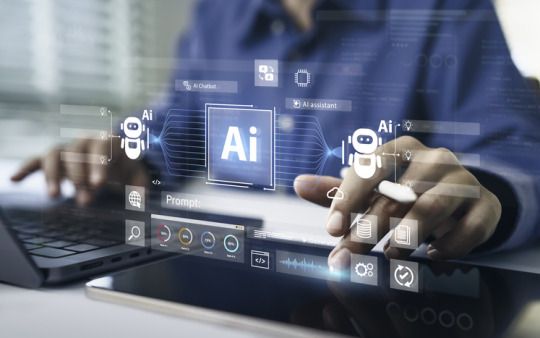
This adaptability is not just a technical enhancement; it’s a necessity. Here’s why Adaptive AI development is the cornerstone of the next generation of smart applications.
What Is Adaptive AI?
Adaptive AI refers to artificial intelligence systems that can adjust their behavior in real time or near-real time based on changing data, environments, or user behavior. Unlike conventional AI models that are trained once and deployed with fixed logic, adaptive systems continuously learn and improve. This is made possible through dynamic architectures, reinforcement learning, online learning, or integration with feedback loops.
Think of it as moving from a map (static directions) to GPS with live traffic updates—Adaptive AI provides context-aware intelligence that evolves with the journey.
The Limitations of Traditional AI Models
Traditional AI development follows a predictable pipeline:
Gather training data
Train a model
Validate and test
Deploy
Monitor performance (often reactively)
Repeat the process for improvements
This pipeline is often time-consuming, rigid, and resource-intensive. If your environment changes—say, user behavior shifts or market conditions evolve—the deployed model starts to become outdated. Updating it often means retraining, revalidating, and redeploying, which is not only slow but also expensive.
For many modern applications—especially in fields like cybersecurity, finance, personalization, and customer service—stale AI is ineffective AI.
Why Adaptive AI Is a Game-Changer
1. Real-Time Learning and Decision-Making
Adaptive AI systems can analyze data as it streams in and refine their responses based on new patterns. For example:
In fraud detection, adaptive systems can respond instantly to new fraud patterns instead of waiting for manual model updates.
In recommendation engines, adaptive AI can personalize suggestions based on real-time user interactions.
This means applications can think on their feet, rather than relying on yesterday’s logic to solve today’s problems.
2. Enhanced User Personalization
Consumers expect tailored experiences—be it in shopping, entertainment, or healthcare. Adaptive AI enables hyper-personalization by:
Continuously learning from user behavior
Adapting content, interfaces, and responses on the fly
Improving engagement and satisfaction
Netflix, Amazon, and Spotify already use adaptive elements to evolve recommendations based on your most recent actions, not just historical data.
3. Improved Efficiency in Dynamic Environments
Industries like logistics, supply chain, and manufacturing operate in highly dynamic settings. Fixed AI models often fail to handle real-world disruptions like weather changes, demand shifts, or equipment malfunctions.
Adaptive AI can:
Recalculate optimal routes based on current traffic and delivery priorities
Adjust production schedules in response to resource availability
React to new inputs without human intervention
This adaptability leads to faster response times and reduced downtime.
4. Better Risk Management
In finance and cybersecurity, the threat landscape changes daily. Traditional models can become liabilities if they can't evolve fast enough.
Adaptive AI offers:
Early detection of anomalies
Dynamic threat modeling
Automated response systems that get smarter with each incident
By learning from every interaction, adaptive systems reduce false positives and better predict emerging risks.
5. Lower Maintenance Costs Over Time
While adaptive AI systems may have a higher initial development cost due to complexity, they typically require fewer manual updates and retraining cycles. This makes them more sustainable and scalable in the long run.
Additionally, with continuous learning, these systems are self-correcting to a degree, reducing the need for constant human oversight.
Key Technologies Enabling Adaptive AI
Several technological advancements are powering the shift toward adaptive AI:
- Reinforcement Learning (RL):
Enables agents to learn optimal behaviors through trial-and-error interactions with an environment.
- Online and Incremental Learning:
Allows models to learn continuously from incoming data rather than retraining on entire datasets.
- Feedback Loops and Human-in-the-Loop Systems:
Combine machine learning with expert input to refine outputs in real time.
- Edge AI:
Processes data closer to the source (on devices) for faster, localized adaptation.
- Federated Learning:
Enables models to learn across decentralized devices without sharing raw data, improving both adaptability and privacy.
Challenges to Consider
Despite its promise, adaptive AI development comes with challenges:
Data Quality: Continuous learning demands consistently clean, unbiased, and timely data.
Model Drift and Overfitting: Without careful monitoring, models may adapt to noise or anomalies.
Ethical and Regulatory Concerns: Real-time learning can introduce risks related to fairness, explainability, and compliance.
Infrastructure Complexity: Building systems that can adapt on the fly often requires robust architecture and integration with cloud, edge, or hybrid systems.
Successful implementation depends on careful governance, ethical design principles, and cross-functional collaboration between data scientists, engineers, and domain experts.
Real-World Use Cases
Healthcare: Adaptive diagnostic systems that adjust based on new research, patient records, or evolving symptoms.
Smart Cities: Traffic systems that optimize lights and routes in real time based on congestion and accident reports.
Retail: Dynamic pricing engines that adjust prices based on demand, competition, and inventory in real time.
Customer Service: Chatbots that learn from past interactions to provide more accurate and empathetic responses.
The Future: Self-Evolving Applications
We are moving toward an era of autonomous, self-improving applications. Imagine software that evolves like living organisms—getting smarter, faster, and more useful without developers having to rewrite code constantly.
With the rise of AI agents, multimodal learning, and generative systems, Adaptive AI will form the backbone of these experiences. Businesses that embrace this shift will be more agile, customer-centric, and resilient in the face of rapid change.
Conclusion
Adaptive AI isn’t just an upgrade—it’s a paradigm shift. As applications increasingly require real-time intelligence, flexibility, and personalization, the traditional “train-and-deploy” model falls short. Adaptive AI enables smarter applications that think, learn, and evolve—unlocking new frontiers of innovation.
Organizations that invest in adaptive AI development today are building the infrastructure not just for better software, but for intelligent, future-ready ecosystems.
0 notes
Text
AI in Manufacturing: What Every Business Should Know
Artificial Intelligence (AI) is transforming nearly every industry—and manufacturing is no exception. Once considered a sector slow to embrace digital transformation, manufacturing is now leading innovation with AI-driven solutions that enhance productivity, quality, and efficiency. As global competition tightens and customer demands grow more complex, manufacturers are turning to AI not just as a tool but as a strategic imperative.
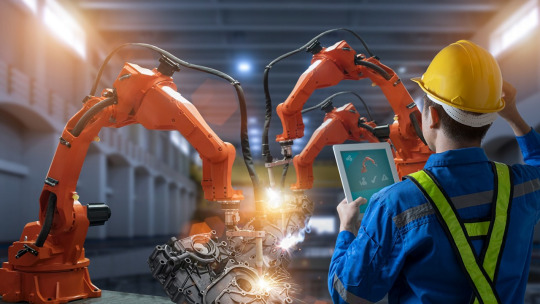
In this article, we’ll explore what every business—whether a startup or a legacy manufacturer—should know about the rise of AI in manufacturing.
1. What Is AI in Manufacturing?
AI in manufacturing refers to the use of intelligent algorithms, machine learning (ML), and data analytics to optimize production processes, reduce costs, and drive innovation. This can include everything from predictive maintenance and supply chain optimization to robotic automation and quality inspection.
Key Technologies:
Machine Learning (ML): Enables systems to learn from data and improve over time without being explicitly programmed.
Computer Vision: Used for visual inspection and defect detection.
Natural Language Processing (NLP): Helps in interpreting human instructions, documentation, and maintenance logs.
Digital Twins: Virtual replicas of physical systems used to simulate, predict, and optimize performance.
Robotics and Automation: AI-driven robots enhance speed, precision, and adaptability in manufacturing lines.
2. Benefits of AI in Manufacturing
✅ Improved Operational Efficiency
AI streamlines processes by automating repetitive tasks, optimizing production schedules, and reducing human error. AI-driven systems can analyze data from multiple sources to make real-time decisions that keep operations running smoothly.
✅ Predictive Maintenance
Rather than waiting for equipment to fail, AI systems can predict when machines are likely to need repairs, minimizing downtime and reducing maintenance costs.
✅ Enhanced Quality Control
Computer vision and AI-powered inspection tools detect defects faster and more accurately than human inspectors, leading to improved product quality and reduced waste.
✅ Supply Chain Optimization
AI helps manage inventory, forecast demand, and optimize logistics. By analyzing historical and real-time data, businesses can anticipate disruptions and adapt their supply chain strategies proactively.
✅ Energy Efficiency and Sustainability
AI can optimize energy usage in real-time, reducing costs and environmental impact. For manufacturers focused on sustainability, AI provides the insights needed to meet green goals.
3. Real-World Applications of AI in Manufacturing
🔹 Predictive Maintenance at Siemens
Siemens uses AI algorithms to monitor the condition of factory equipment. Their systems can predict potential failures and schedule maintenance, reducing unexpected downtime.
🔹 Quality Inspection at BMW
BMW uses AI-powered cameras and deep learning models to detect tiny defects in car parts—some of which are nearly invisible to the human eye.
🔹 Supply Chain Optimization at General Electric
GE applies AI to manage inventory and logistics, leading to significant cost reductions and faster delivery times.
🔹 Smart Factories by Bosch
Bosch has implemented AI in their smart factories to automate production decisions, resulting in up to 25% improved productivity.
4. Challenges to Consider
While AI offers immense potential, adopting it comes with a set of challenges:
🔸 Data Quality and Integration
AI models are only as good as the data they’re trained on. Manufacturers often face issues integrating data from disparate systems and ensuring its accuracy.
🔸 High Initial Investment
AI implementation can be expensive upfront, especially for small- and mid-sized manufacturers. ROI may take time and needs careful planning.
🔸 Talent Shortage
There’s a growing need for AI specialists, data scientists, and engineers who understand both manufacturing and AI technologies.
🔸 Change Management
Resistance to change can stall implementation. Effective training and clear communication are critical for success.
5. How to Get Started with AI in Manufacturing
Step 1: Identify Use Cases
Start small. Focus on one or two high-impact areas like predictive maintenance or quality control.
Step 2: Assess Data Readiness
Audit your existing data infrastructure. Clean, structured data is essential for effective AI.
Step 3: Partner with Experts
Work with AI vendors, consultants, or academic institutions that specialize in manufacturing solutions.
Step 4: Pilot and Scale
Implement a pilot project to test the technology. Once proven, scale gradually while measuring ROI.
Step 5: Build a Culture of Innovation
AI adoption isn’t just a technical shift—it’s cultural. Encourage innovation and cross-functional collaboration across teams.
6. The Future of AI in Manufacturing
As AI technology matures, its role in manufacturing will only deepen. We’re moving toward hyperconnected “Industry 5.0” environments where human creativity and AI capabilities work hand in hand.
Emerging trends include:
Edge AI: Real-time processing at the factory floor without relying on cloud latency.
AI + IoT (AIoT): Smarter connected devices that adapt and learn from their environment.
Collaborative Robots (Cobots): Safer, smarter robots working alongside humans.
Conclusion
AI in manufacturing is no longer optional—it's a competitive advantage. By embracing AI thoughtfully and strategically, manufacturers can unlock greater efficiency, product quality, and innovation. However, success depends on aligning technology with business goals, investing in people, and taking a phased approach to change.
The future of manufacturing is intelligent, agile, and data-driven. The sooner businesses adapt, the better prepared they’ll be to lead the industry’s next chapter.
0 notes
Text
Top Benefits of Implementing an AI Enterprise Search Solution
In today’s fast-paced digital economy, enterprises are drowning in data. From emails and documents to databases and cloud platforms, information is scattered across a multitude of systems. Yet, employees spend nearly 20-30% of their workweek just searching for information. Enter AI-powered enterprise search solutions — the modern answer to this widespread productivity drain.
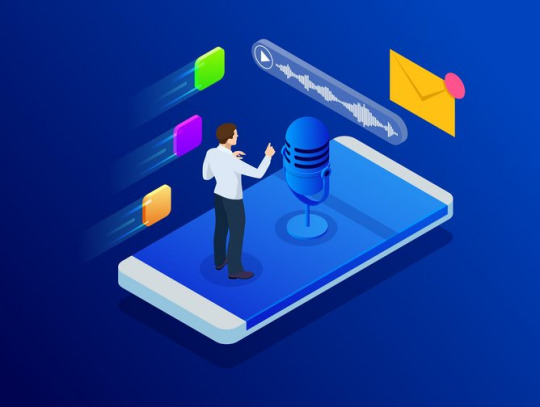
Artificial Intelligence (AI) is revolutionizing how organizations manage and retrieve data. By leveraging machine learning, natural language processing (NLP), and semantic search, AI enterprise search platforms transform unstructured data into actionable intelligence. Here's a closer look at the top benefits of implementing an AI enterprise search solution in your organization.
1. Accelerated Access to Information
Traditional keyword-based search often yields irrelevant or overwhelming results. AI search, on the other hand, understands context and user intent. Whether you're searching for a project proposal, a client communication, or a technical specification, AI delivers precise and ranked results — often before you finish typing.
Benefit:
Reduces time spent searching by up to 50%
Increases employee productivity
Improves turnaround times on decisions
2. Enhanced Decision-Making
When decision-makers have access to accurate, real-time information, they can act more confidently and strategically. AI enterprise search surfaces the most relevant, context-aware insights from across departments, including finance, HR, sales, and R&D.
Benefit:
Enables data-driven decisions
Reduces reliance on siloed knowledge
Enhances cross-departmental collaboration
3. Improved Employee Experience
Employees often face friction when trying to locate files or expertise within large organizations. AI search engines provide personalized search experiences that learn from user behavior, preferences, and role-specific needs.
Benefit:
Reduces onboarding and training time
Increases employee satisfaction and engagement
Supports remote and hybrid work environments effectively
4. Reduced Operational Costs
Time wasted in information retrieval translates directly into lost revenue. By streamlining internal search capabilities, AI solutions reduce helpdesk inquiries, minimize duplication of work, and cut down on manual data entry or retrieval processes.
Benefit:
Cuts costs associated with inefficient workflows
Optimizes resource allocation
Minimizes redundant efforts
5. Seamless Integration Across Data Sources
AI enterprise search platforms are built to integrate with a wide range of tools — from SharePoint, Salesforce, and Google Drive to proprietary CRMs and databases. This unified search capability means that users no longer need to switch between platforms to find what they need.
Benefit:
Unifies organizational knowledge
Reduces tool fatigue
Boosts collaboration across teams and departments
6. Security and Compliance Support
AI search solutions include role-based access control, audit trails, and data governance features that ensure sensitive information is protected and searchable only by authorized personnel. They also help in meeting compliance requirements by surfacing relevant documents during audits.
Benefit:
Maintains data privacy and security
Helps with regulatory compliance (GDPR, HIPAA, etc.)
Prevents unauthorized access to sensitive information
7. Scalability and Future-Proofing
Modern AI enterprise search solutions are cloud-native and scalable, making them ideal for growing businesses. As your organization expands and generates more data, the system adapts, continually learning and improving from usage patterns.
Benefit:
Grows with your organization
Adapts to new data sources and tools
Leverages continuous AI model improvements
Conclusion
Investing in an AI enterprise search solution is more than just a technological upgrade — it’s a strategic move toward building a smarter, more agile organization. As companies navigate an increasingly complex data landscape, those that harness the full potential of AI search will enjoy significant advantages in productivity, innovation, and competitiveness.
0 notes
Text
Why Top Enterprises Are Switching to AI Agent Assist Solution?
In today’s hyper-competitive business environment, every second counts—especially in customer service. Enterprises are under increasing pressure to deliver seamless, personalized support across multiple channels. To meet these demands, top companies are turning to a transformative technology: AI Agent Assist.
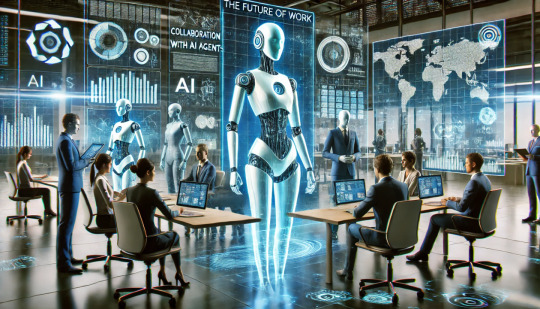
This solution isn't just a trend—it’s rapidly becoming a necessity. But what exactly is AI Agent Assist, and why are major enterprises making the switch? Let’s explore.
What Is AI Agent Assist?
AI Agent Assist is a smart, real-time support system that helps human agents during customer interactions. It uses artificial intelligence to:
Analyze conversations in real time
Suggest relevant responses or information
Automate repetitive tasks
Surface knowledge base articles instantly
Ensure compliance and accuracy
Unlike traditional chatbots, AI Agent Assist doesn't replace human agents—it empowers them.
1. Faster Response Times = Happier Customers
Speed is everything. Customers expect quick resolutions, whether they’re contacting a bank, an e-commerce site, or a telecom provider. AI Agent Assist helps agents by instantly:
Suggesting relevant answers
Pre-filling forms or tickets
Offering contextual recommendations
This slashes average handling time (AHT) and significantly boosts first-call resolution (FCR) rates—two of the most critical customer service KPIs.
2. Consistent and Accurate Support Across the Board
Human error is inevitable—but AI can mitigate it. With AI Agent Assist, enterprises ensure that every agent, whether a new hire or a seasoned rep, provides consistent and accurate information.
This is especially vital in industries like:
Healthcare – for compliance and accurate data handling
Finance – to ensure regulatory accuracy
Retail – to maintain brand consistency in messaging
AI ensures that responses are aligned with company policies, legal standards, and customer expectations.
3. Better Employee Experience = Lower Attrition
Customer support roles are notoriously high-stress. Constant multitasking, pressure to meet metrics, and repetitive questions all contribute to burnout.
AI Agent Assist acts as a “co-pilot,” helping agents stay focused on the customer instead of searching through multiple systems. This:
Reduces cognitive load
Speeds up onboarding for new agents
Improves overall job satisfaction
Happy agents = better service = happier customers.
4. Scalable Customer Support Without Sacrificing Quality
When enterprises grow, so does their customer base. Scaling support while maintaining quality is challenging and expensive.
AI Agent Assist allows enterprises to scale support teams without proportionally increasing headcount. By automating routine tasks and offering real-time suggestions, each agent becomes significantly more productive—sometimes doubling their capacity.
5. Data-Driven Insights for Continuous Improvement
Every interaction is a goldmine of data. AI Agent Assist platforms often come equipped with analytics tools that capture:
Top customer pain points
Agent performance trends
Knowledge gaps in real time
This data empowers businesses to make strategic decisions, update training materials, and refine customer experience strategies on an ongoing basis.
6. Easy Integration with Existing Systems
One of the reasons top enterprises are switching is that modern AI Agent Assist solutions are plug-and-play with most CRM, ticketing, and communication platforms. Whether it’s Salesforce, Zendesk, or custom enterprise software, integration is usually seamless.
This means companies can enhance their service teams without ripping and replacing existing infrastructure.
7. Proven ROI: Cost Savings and Revenue Uplift
The ultimate driver for enterprise adoption? The numbers don’t lie.
Reduction in average handling time (AHT): up to 30–40%
Increase in customer satisfaction (CSAT): 10–20%
Lower training costs: faster ramp-up time for new agents
Higher resolution rates: less need for callbacks or escalations
AI Agent Assist turns your support team into a high-performance engine—without ballooning costs.
Conclusion
The most successful enterprises don’t replace human expertise—they enhance it with AI. By adopting AI Agent Assist solutions, companies are:
Delivering faster, smarter customer service
Reducing operational costs
Creating happier, more efficient teams
As AI continues to evolve, the question isn’t if your business should adopt AI Agent Assist, but when. And for top enterprises, the time is now.
0 notes
Text
Top 7 Benefits of Investing in Adaptive AI Development Today
As technology continues to reshape industries at lightning speed, one innovation is rapidly gaining attention for its ability to evolve, learn, and adapt in real time—Adaptive AI. Unlike traditional AI systems that operate based on fixed models and static data, Adaptive AI leverages real-time feedback, continuous learning, and contextual awareness to optimize decision-making processes.
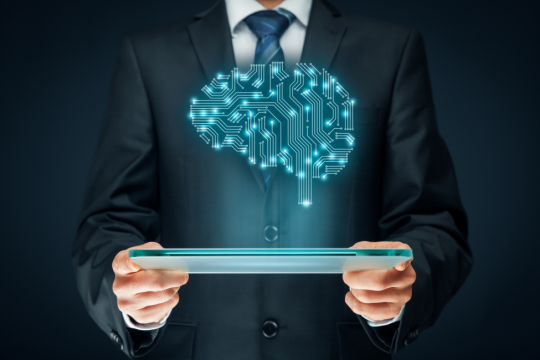
Businesses that prioritize Adaptive AI development today are setting themselves up for long-term agility, resilience, and competitive advantage. Let’s explore the top 7 benefits of investing in Adaptive AI development right now.
1. Real-Time Decision Making
Adaptive AI systems can process and analyze data in real time, allowing organizations to make quick, informed decisions. This capability is particularly beneficial in sectors like finance, healthcare, and logistics, where time-sensitive decisions can significantly impact outcomes.
2. Continuous Learning and Improvement
Unlike static AI models that require manual retraining, Adaptive AI continuously learns from new data. This enables systems to improve over time without constant developer intervention—ideal for dynamic environments where conditions and data change frequently.
3. Enhanced Customer Experience
By learning from user interactions and behavior, Adaptive AI can deliver hyper-personalized experiences. From product recommendations to customer service chatbots, these systems create more relevant and responsive user journeys, improving satisfaction and retention.
4. Cost Efficiency and Resource Optimization
Investing in Adaptive AI can lead to significant long-term cost savings. As these systems improve autonomously, businesses reduce the need for frequent retraining, manual updates, and performance tuning—freeing up resources for other strategic initiatives.
5. Better Risk Management
Adaptive AI can detect anomalies, predict risks, and respond to evolving threats faster than traditional models. In sectors like cybersecurity or financial fraud detection, this translates into quicker mitigation and reduced exposure.
6. Scalability Across Functions and Industries
One of the most powerful aspects of Adaptive AI is its versatility. Whether it’s used in supply chain optimization, predictive maintenance, or personalized marketing, Adaptive AI can scale across departments and industries with minimal friction.
7. Staying Ahead of the Competition
Early adopters of Adaptive AI will have a distinct competitive edge. The ability to learn, adapt, and respond faster than competitors can lead to innovation, better products, and increased market share—positioning your organization as a leader in its field.
Conclusion
In an age defined by rapid change and digital disruption, organizations that invest in Adaptive AI Development are not just keeping up—they're leading the charge. The advantages are clear: smarter decisions, improved customer engagement, cost efficiencies, and a future-ready foundation. Now is the time to embrace Adaptive AI and unlock its full potential for your business.
0 notes
Text
The Future of AI: Trends in LLM Development for 2025
As we move deeper into the AI revolution, large language models (LLMs) are increasingly becoming the backbone of digital transformation across industries. In 2025, the pace of innovation in LLM development continues to accelerate, with new trends emerging that promise to reshape how we work, learn, and interact with machines. From architectural breakthroughs to ethical frameworks, here’s a deep dive into the most important trends shaping the future of LLMs in 2025.
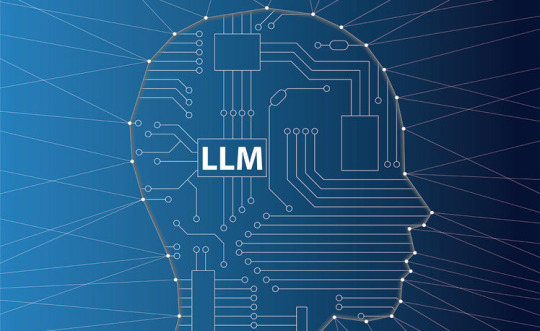
1. Smaller, Smarter Models
The early era of LLMs was marked by scaling—bigger models with more parameters often meant better performance. However, 2025 is witnessing a shift toward efficiency over size. Through techniques like model distillation, quantization, and sparsity, developers are building lightweight models that can run on edge devices without compromising much on performance.
This trend makes LLMs more accessible to smaller businesses, researchers, and even offline applications, democratizing AI in a meaningful way.
2. Multimodality Goes Mainstream
Text is no longer the only game in town. 2025 is the year multimodal models—capable of understanding and generating not just text, but also images, audio, and video—become widely adopted. This leap enables LLMs to function as general-purpose assistants. Think: diagnosing issues from images, summarizing video content, or translating speech in real time.
Multimodal capabilities are critical for sectors like healthcare, media, education, and customer service, unlocking applications that were previously too complex for single-modality models.
3. Agentic AI and Autonomous Workflows
LLMs are evolving beyond simple input-output tools into agentic systems—AI that can reason, plan, and take multi-step actions autonomously. These agent-based architectures integrate tools like web browsers, calculators, code interpreters, and even APIs to perform real-world tasks with minimal human guidance.
In 2025, businesses are beginning to embed such AI agents into their workflows to handle tasks like market analysis, email management, research synthesis, and software testing.
4. Open-Source Renaissance
While major tech players continue to build proprietary models, 2025 is also seeing a surge in high-quality open-source LLMs. The open model ecosystem is rapidly catching up in capabilities, offering transparency, adaptability, and community-driven innovation.
Open-source LLMs are increasingly being adopted for enterprise-grade applications, especially in regions and industries with data sovereignty and privacy concerns.
5. Custom and Domain-Specific Models
Generic LLMs are giving way to specialized models fine-tuned for specific domains—legal, medical, scientific, or technical. These models are trained on curated data to ensure higher accuracy, safety, and relevance.
With advancements in retrieval-augmented generation (RAG), model fine-tuning, and synthetic data generation, organizations in 2025 are building LLMs that deeply understand their industries, resulting in better outcomes and reduced hallucination.
6. AI Alignment and Regulation
As LLMs become more powerful, concerns about misuse, misinformation, and bias continue to grow. In 2025, alignment research is a major focus area. New techniques such as Constitutional AI, reinforcement learning from human feedback (RLHF), and adversarial training are improving the safety and interpretability of LLMs.
At the same time, governments and global bodies are introducing clearer regulatory frameworks around responsible AI development and deployment—impacting everything from training data transparency to safety evaluations.
7. Memory and Personalization
Another exciting development is long-term memory for LLMs. Instead of treating every prompt as a new conversation, models can now remember user preferences, context, and history over time. This capability brings us closer to AI companions that genuinely adapt to individual users, providing personalized and consistent support.
This trend is particularly important in education, coaching, therapy, and productivity tools.
8. Human-AI Collaboration
Rather than replacing humans, the most effective LLM deployments in 2025 emphasize collaboration. AI becomes a creative partner—helping humans brainstorm, draft, debug, and iterate. We're seeing a shift in interface design as well, with new tools focused on co-creation and shared control rather than one-way command interfaces.
This change is fostering a new era of augmented intelligence, where human intuition and machine reasoning complement each other.
Conclusion
The future of AI, particularly in the realm of large language models, is not just about bigger models or flashier features—it’s about making these systems more useful, trustworthy, and human-centric. In 2025, LLM Development are becoming deeply integrated into our lives, not just as tools, but as intelligent collaborators.
As developers, businesses, and users adapt to this rapidly changing landscape, staying informed about these trends is key to harnessing the full potential of AI ethically, efficiently, and effectively.
0 notes
Text
ChatGPT App Development: How to Build AI-Powered Apps from Scratch
Artificial Intelligence (AI) has shifted from the realm of science fiction into a practical toolkit for developers and businesses alike. One of the most powerful and accessible AI technologies today is ChatGPT — a conversational AI model developed by OpenAI. Whether you're a solo developer, entrepreneur, or part of a tech team, building an AI-powered app with ChatGPT is now more achievable than ever.
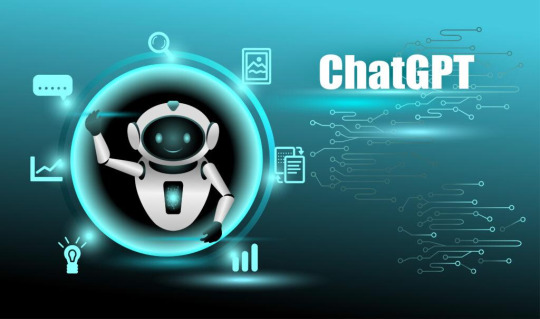
In this guide, we'll walk you through the foundational steps to develop an AI-powered app using ChatGPT from scratch — from understanding the technology to designing, developing, testing, and deploying a functional application.
Understanding ChatGPT and Its Potential
Before diving into development, it’s crucial to understand what ChatGPT is and why it's useful. ChatGPT is a large language model that excels at understanding and generating human-like text. It can be integrated into various applications for purposes such as:
Virtual assistants
Customer support bots
Educational tools
Content generation platforms
Personalized recommendation engines
The beauty of ChatGPT lies in its versatility. It can interpret prompts, generate meaningful responses, and even simulate human-like conversation across different contexts.
Step 1: Define the Purpose and Use Case
Every successful app begins with a clearly defined purpose. Ask yourself:
What problem is this app solving?
Who is the target audience?
What specific role will ChatGPT play?
For example, if you're building a mental health companion, ChatGPT could offer daily check-ins and mindfulness advice. If you're developing a customer service bot, it can handle inquiries, process returns, and provide product information.
Step 2: Plan the User Experience (UX)
AI should enhance, not complicate, the user experience. Define how users will interact with the app:
Will it be text-based, voice-activated, or both?
How will users input their queries?
What kind of responses will be most helpful?
Design simple, intuitive flows. A clean interface paired with clearly labeled actions improves engagement and usability.
Step 3: Set Up Your Development Environment
Once you have a solid plan, you need to choose the tech stack for your app:
Frontend: This is the interface — web (using JavaScript frameworks like React or Vue) or mobile (iOS/Android).
Backend: Manages user data, handles API requests, and communicates with the ChatGPT model.
Database: Stores user sessions, conversation history, preferences, etc.
Although you won't be programming at this stage, it's important to understand the structural needs of your app.
Step 4: Integrate ChatGPT into Your App
The ChatGPT model can be accessed via API. When you call the API, you send a user’s message as input and receive a generated response from ChatGPT.
Here’s how the integration works in concept:
User Input: The app captures the user’s message.
API Request: The backend sends this input to the ChatGPT API.
AI Response: ChatGPT processes the input and generates a response.
Display Output: The frontend displays the AI-generated response back to the user.
This seamless back-and-forth interaction is what powers your intelligent app.
Step 5: Handle Context and Personalization
ChatGPT can generate better responses when it has access to contextual data. To make your app more intelligent:
Maintain conversation history to give continuity to chats.
Use user preferences and session data to personalize interactions.
Optionally, store frequently asked questions to generate more targeted responses.
Proper management of state and memory can transform your app from simply reactive to genuinely helpful.
Step 6: Ensure Security and Ethical Use
AI apps come with responsibilities:
Data Privacy: Encrypt user data and comply with regulations like GDPR or CCPA.
Bias Mitigation: AI can inadvertently generate biased content. Monitor outputs and fine-tune prompts to reduce this.
Transparency: Let users know they are interacting with AI and offer ways to give feedback or escalate to a human if needed.
Your app’s credibility hinges on ethical design and transparent communication.
Step 7: Test Extensively
Before launch, thorough testing is crucial. Focus on:
Accuracy: Does the AI provide relevant and accurate answers?
Speed: Are responses delivered in a timely manner?
Error Handling: How does the app handle unrecognized inputs or service failures?
Testing with real users provides insights that internal testing can miss.
Step 8: Launch and Iterate
Once you're confident with your MVP (Minimum Viable Product), launch it. But remember — launching is just the beginning. Monitor usage, collect feedback, and continuously improve.
Add new features based on user demand.
Analyze conversations to identify patterns and gaps.
Refine prompts and update the interface to optimize engagement.
Conclusion
Building a ChatGPT-powered app from scratch may seem complex, but it's fully within reach for today’s developers. By following a step-by-step approach — from purpose definition to post-launch iteration — you can create a powerful, user-friendly AI application.
The future of apps is conversational. With ChatGPT App Development as your core engine, you're not just creating an app — you're making an experience. The key lies in thoughtful design, ethical implementation, and continuous innovation.
0 notes